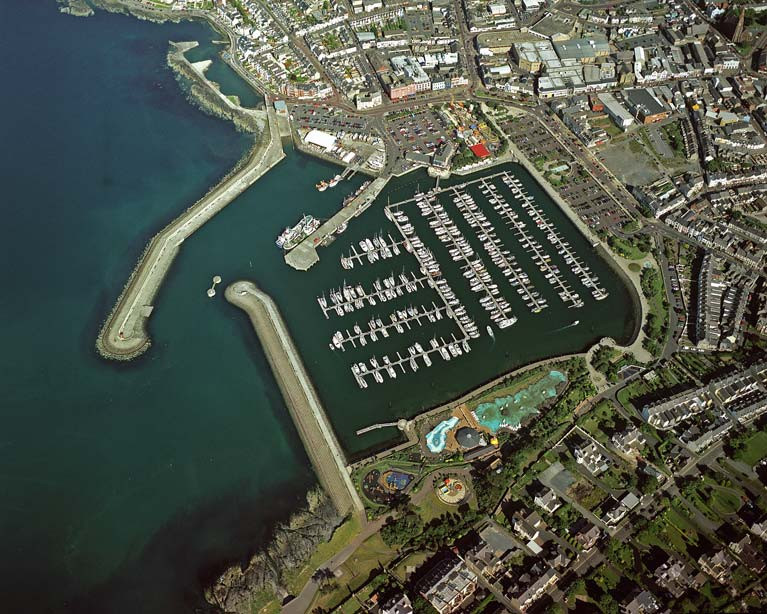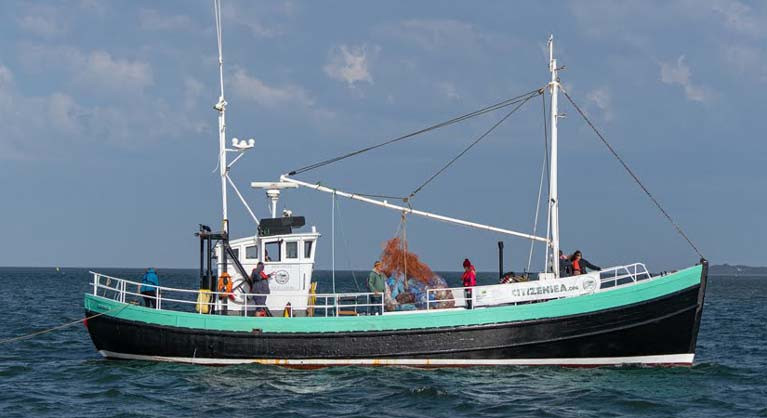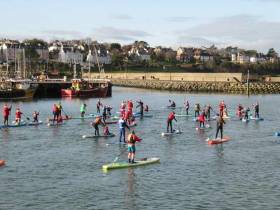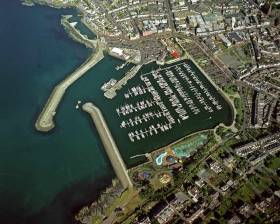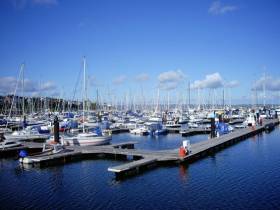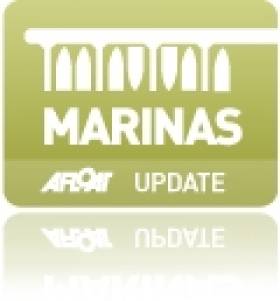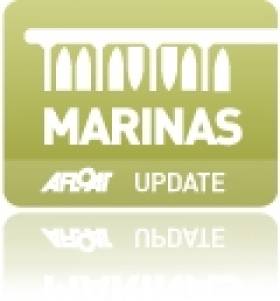Displaying items by tag: Bangor Marina
Belfast Lough's Quay Marina at Bangor joins Dean & Reddyhoff
The Five Anchor Quay Marina in Bangor has announced that from Spring this year it will become part of a single marina group, boatfolk.
This development follows last year’s announcement from Quay Marinas that they would form, with Dean & Reddyhoff, a single marina group with a shared vision and shared name. So, in April the 11 marinas nationwide will be brought together under a new name and brand, boatfolk.
The name boatfolk, is explained by Quay Marinas Bangor to its berth holders.
“We’ve always tried to be a little different and have never underestimated the importance of our people and our customers in making every experience at our marinas great. We are unashamedly putting you at the heart of what we do and are celebrating the range of unique characters that make up our community of boaters. From racing sailors to motor cruisers, paddleboarders, anglers and divers, engineers and sailmakers. It’s our berth holders and visitors that make our marinas great. The new brand will be launched in the Spring with a new website, new look and feel and an extra special welcome pack to kick-off the 2020 season. You’ll begin to see more of the boatfolk name and brand from the beginning of April and we hope that you’ll help us celebrate the start of this first exciting chapter in the boatfolk”.
Bangor Marina has 530 berths and provides all the usual facilities, both afloat and shoreside, on a 24 hour service basis. It is conveniently situated as a stopover for passage north and south in the Irish Sea.
More here
Next Steps in Bangor Harbour Regeneration
The regeneration of the waterfront in Bangor as detailed on 25th November in Afloat.ie, reached another crucial stage in its progress when the developer Bangor Marine Ltd. submitted a comprehensive planning application for the site at Queen’s Parade and Marine Gardens overlooking the Marina.
Announcing this next step, the Department for Communities flagged it up as a significant milestone towards seeing the major £50 million regeneration project delivered in the town. Bangor Marine Ltd. is a consortium made up of several leading companies including the Karl Group and Farrans.
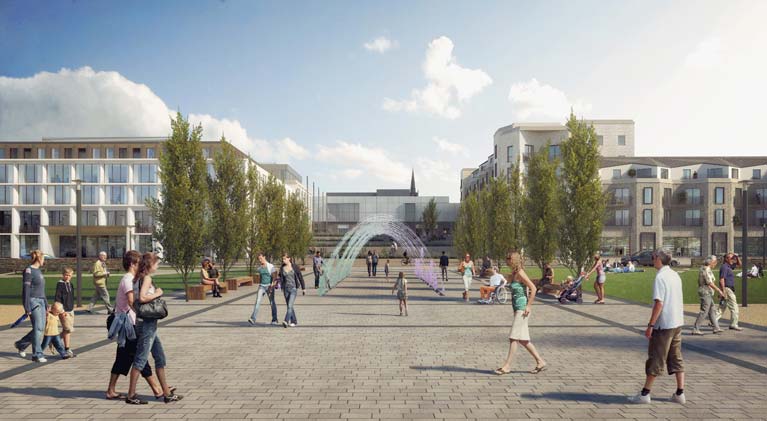 An artist's impression of the new Bangor Harbour area
An artist's impression of the new Bangor Harbour area
The proposed scheme is made up of; Marine Gardens Public Realm combining external events space, cafes, sheltered promenade and kiosks, beach, seafront lawns, children’s play area and water feature, a hotel, a destination/cinema building, residential units, commercial/retail/restaurant space, office space, a play zone, refurbishment of existing commercial properties, basement car park, and marketplace & courtyard squares.
With several key shops quitting the town centre for outlying retail parks and the only shopping centre closing its doors some years ago, it is hoped that this project will go some way to restoring confidence in the town.
Welcoming the application, the Minister for Communities, Deirdre Hargey MLA, said: “This is a huge step in the right direction for the redevelopment of Bangor’s town centre. We are one step closer to the £50 million investment in Bangor, which will create much-needed jobs, shops, offices and homes, and will create an attractive place for people to visit”. She went on to say, “Now that the developer has submitted the Planning Application, I am encouraging everyone in Bangor to get involved, share their ideas, and make their voices heard in the consultation that follows”.
The Mayor of Ards and North Down, Alderman Bill Keery said: “The regeneration of Queen’s Parade is critical to the future of Bangor and working with Council’s plans to help regenerate the Bangor Waterfront will help to maximise the economic growth potential of the wider Borough of Ards and North Down”.
Aran Blackbourne, from Bangor Marine Ltd, said: “We are delighted to submit our exciting plans for the transformation of Queen’s Parade and Marine Gardens in Bangor. Submission of these plans follows a period of extensive and meaningful engagement with Ards and North Down Borough Council, the Department for Communities and, most importantly the people of Bangor.
Citizen Sea: Northern Ireland’s First Boat-Based Environmental Charity
If you go down the ramp to the pontoons in Bangor Marina you couldn’t miss the impressive vessel sitting to your right. She’s the Seabird, Northern Ireland’s first sea-going boat-based environmental charity known as 'Citizen Sea', supported by Ards and North Down Borough Council and Bangor Marina.
Co-Founders are Jen Firth, herself a boat lover and marine conservationist, who together with Master Shipwright Tony McLoughlin (whose previous project was the Brian Boru), aim through Citizen Sea, to inspire others to engage with the marine environment through Science, Education, Research and raising awareness.
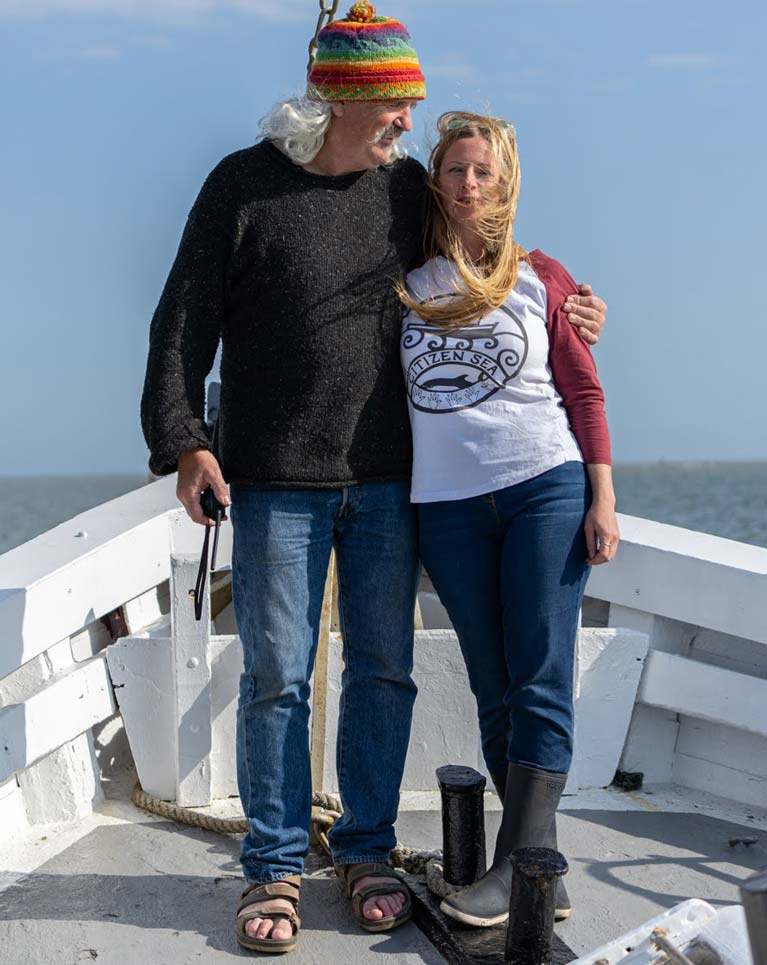 Tony McLoughlin and Jen Firth
Tony McLoughlin and Jen Firth
Launched in 1969, the vessel is a 17-metre ex herring Ringnetter of 40 tonnes displacement built of larch and oak in the Norse tradition by Scottish yard Weatherhead and Blackie of Port Seaton. Descended from the legendary sailing drifters of the late nineteenth century, she is a roomy and powerfully built boat and has worked through all seasons and as a general-purpose fishing vessel up until late 2018.
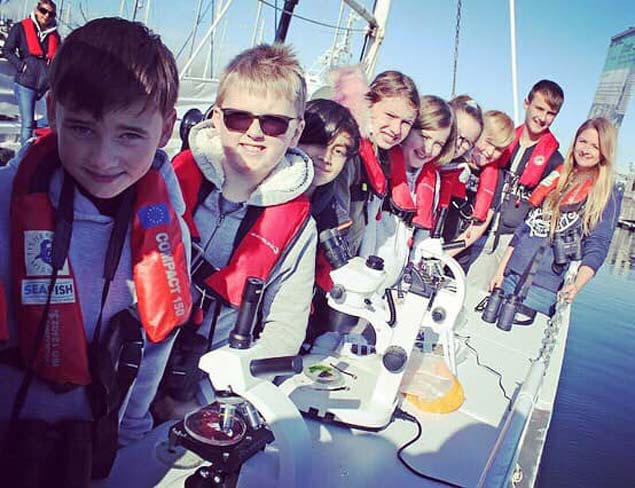 Citizen Sea Science Club Photo: Courtesy Citizen Sea
Citizen Sea Science Club Photo: Courtesy Citizen Sea
Primarily Seabird is as a research and education vessel and, perhaps most importantly, an ambassador for the natural marine and coastal environment. Citizen Sea wants to inspire local people and visitors to become stewards of the greatest natural resource in order to create healthier seas and coastal communities now and in the future. Jen and Tony hope to create action through education and provide evidence for conservation by engaging people.
"Citizen Sea aims to inspire others to engage with the marine environment"
“It is surprising just how many people who live in a coastal region have never set foot on a boat”, Jen says, and she and her colleagues have sought to rectify this, principally through a schools’ programme. About the schoolchildren who visit she says, “when they get on a boat, they don’t even look at their phones!”. Justification surely for what Jen and Tony are undertaking. Also, they want, by the example of the restoration of this particular vessel, to encourage upcycling and using older things. By bringing people to the sea they hope that they will develop a greater understanding of the marine environment and engage with the rich maritime heritage and culture whilst learning how to care for and protect the wildlife and the environment within it.
The schools' programme has proved extremely popular and up to ten children make up a Science Club, with two sessions per day on weekends. The lessons also extend to examining the contents of the marina’s Seabins which collect waste material. Sadly, they have found microplastics in the contents.
Other activities include beach clean-ups and marine environmental workshops. For working out of the marina, for instance on islands, and places which would be inaccessible to this large boat, RIBs are used. More info here
Stand Up Paddleboarding Fundraiser at Bangor Harbour
It’s not often a Notice to Mariners is issued by Bangor Harbour on Belfast Lough for a paddleboarding event but this was the case when a fundraiser was held in the Harbour on a very cold Sunday morning (1st Dec) writes Betty Armstrong
Stand Up Paddleboarding has taken off in Northern Ireland and a great turn out of SUPpers took part to support SUPforCancer. There were 38 adults, 12 children and three dogs. A substantial crowd watched from the Eisenhower Pier. It was organised by SUP Hub NI.
The event was sponsored by nine local business and plenty of prizes were won in what is believed to be the first-ever SUP Tombola where numbered tennis balls were scattered around the Harbour and paddlers had to race to scoop one up before a fellow paddler did. Their number correlated to a prize donated by one of the supporting businesses, a new and fun way for people to win prizes. There were special prizes for the Fastest Santa, Fastest ‘grim’ (kid), and best dressed.
In all £723 has been raised so far but the JustGiving link remains open in case readers wish to add to it here
Spectacular Fireworks Display Planned at Bangor Harbour
The Ards and North Down Christmas lights switch-on this year on Saturday (23rd) at Bangor on Belfast Lough will be followed by a spectacular firework display from a floating barge moored outside the Harbour. A 200-metre safety zone will be placed around the floating barge.
As the Marina is a popular place for viewing the display from your boat, there is no restriction on entering via the reception area only, as the side gate will be locked.
Bangor Harbour Bye – Laws 2005 (Part 11 Navigation, section 3) apply.
All vessel movements will be prohibited from 1700 hrs to approx. 1830 hrs. Please listen to VHF channel 11 / 80 for safety directions.
Access Restrictions - Eisenhower Pier & Pickie Pier - Saturday 23rd November
Access to vehicular traffic and members of the public will be prohibited from 1600 hrs to approx. 1830 hrs* (authorised personnel only)
Access Restrictions – Commercial Pier & Fuel Pontoon - Saturday 23rd November
Access to vehicular traffic will be prohibited from 1600 hrs to approx. 1830 hrs* - authorised personnel only. The fuel berth will be closed from 1600 hrs to approx. 1830 hrs*. No unauthorised parking on the Commercial Pier.
*Access Restrictions Lifted
Restriction to access (Eisenhower, Commercial & Pickie Piers) will be lifted by the Harbour Master only when ‘safe site’ assurances have been received from Ards and North Down Borough Council’s Risk Manager.
Safety Zone – 200 metres around the floating Barge
A 200-metre safety zone will be placed around the floating barge. Please do not come within 200 metres of the barge. MV Ocean Crest will patrol the Safety Zone.
Bangor Marina Onlookers Fail To Help Drowning Man
#Rescue - Belfast Coastguard was "stuck for words" after bystanders failed to raise the alarm for an elderly man who fell into the water at Bangor Marina this week.
According to the Belfast Telegraph, the man was working on his boat at the marina on Belfast Lough when he slipped into the water just after 11am on Thursday morning (31 March).
He was reportedly moments away from drowning before he was rescued by Graham Edgar, who described a group of onlookers at the marina who failed to call for help, or even throw in one of a number of lifesaving devices nearby.
The Belfast Telegraph has more on the story HERE.
BJ Marine Seek New Yacht Broker for Bangor Marina Office
Irish marine firm BJ Marine are recruiting a senior yacht broker to sell new and used boats at their well known and successful boat sales and service operation situated at Bangor Marina in Northern Ireland. BJ Marine represent market leading brands and our office network covers UK, Ireland and the Mediterranean.
BJ Marine Sales director James Kirwan says the successful applicant will be an 'energetic and motivated candidate' with a proven record in sales and a strong interest in boats. Computer skills are essential.
Brief Description of Requirements:
· Answering sales enquiries for new and used boats.
· Managing leads and prospects and to seek out new leads.
· Seek out and secure new brokerage listings.
· Participation in National and International Sales events.
· Communicate with fellow employees to generate sales all markets
· Report to management on activity progress.
· Work with existing boatyard staff to continue the success of the reputable yard
Location: Bangor, Northern Ireland
Salary/Rate: £TBD & Commission
To apply, please send a CV to [email protected]
Bangor Marina. Yacht & Boat Berths & Storage in Northern Ireland
Situated on the south shore of Belfast Lough, Bangor is located close to the Irish Sea cruising routes. The Marina is right at the town's centre, within walking distance of shops, restaurants, hotels and bars. The Tourist information centre is across the road from the marina reception and there are numerous visitors' attractions in the Bourough. The Royal Ulster Yacht Club and the Ballyholme Yacht Club are both nearby and welcome visitors.
Quay Marinas Limited
Bangor Marina, Bangor, Co. Down, BT20 5ED
Tel: 028 91453297 Fax: 028 9145 3450
Email: [email protected]
www.quaymarinas.com
Bangor Marina Celebrates 1000th 'TransEurope' Visitor
#marina – Four happy crew of the yacht " Atlantis" recently visited Bangor Marina, bringing TransEurope visiting boats over the thousand mark since Bangor joined the network in 2004. In addition, the crew enjoyed a 50% discount on the visitors' rates as a result of their home port's membership of TransEurope Marinas, a unique pan-European marina marketing group, comprising 50 of Europe's most welcoming marinas stretching from Lanzerote to the Clyde.
This network of marinas in UK, Ireland, France, Belgium, Netherlands and Spain, including the Canaries, was established in 1987 as TransManche by 5 cross Channel ports, but over the past 5 years it has expanded rapidly, to include a particularly strong Irish Sea area cluster
Andrew Jaggers, Director at Quay Marinas and immediate past Chairman of TransEurope, said: "Bangor Marina has welcomed tens of thousands of visiting boats and crew over the past 23 years, generating a very significant economic benefit to the town. Membership of TransEurope has contributed to a steady flow of valuable out of state visitors to Bangor, which has been very welcome locally in these difficult economic times. In turn, we are very pleased to be able to make TransEurope benefits, together with those offered by Quay Marinas, available exclusively in Northern Ireland to Bangor Marina berth holders"


























